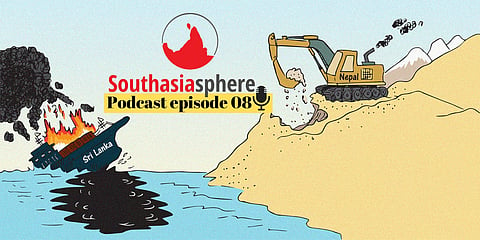Journalists under attack, marine disaster in Sri Lanka, chasing monkeys, and more
Southasiasphere is our monthly roundup of news events and analysis of regional affairs. If you are a member, you will automatically receive links to the new episodes in your inbox. If you are not yet a member, you can still get it for free by signing up here.
In this episode, we talk about the recent cases of attack on and intimidation of journalists in Southasia, particularly in Bangladesh, Pakistan and Myanmar. In Around Southasia in 5 minutes, we'll be looking at stories of environmental crises in Sri Lanka and Nepal, a currency-swap deal between Sri Lanka and Bangladesh, and China's land grab in Bhutan, among other topics. Plus our culture section Bookmarked, where we discuss Southasian archives and a Hindi-language movie about a 'monkey repeller'.

